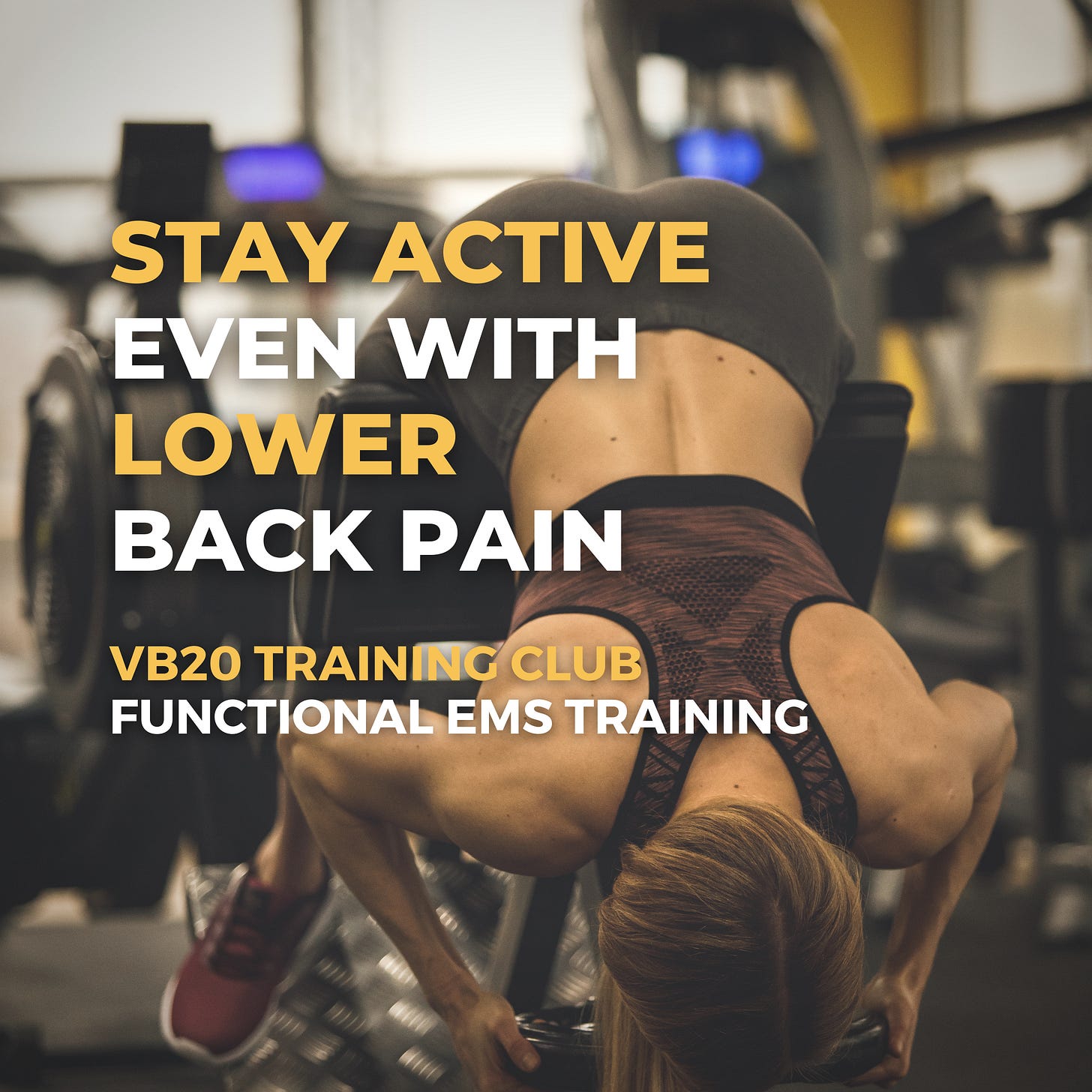One of the most important things that people with low back pain can do is to stay as physically active as possible in daily life and exercise regularly.
Things that have been proven to help include exercises to strengthen the core muscles, as well as certain exercises used in pilates, yoga, and EMS.
Not moving enough can weaken your core muscles, make the pain worse over the long term, and also lead to other health problems. Because of this, people who have back pain are often advised to get "more exercise" and "stay active." There are good reasons for this advice: For a start, regular physical exercise has been shown to reduce pain.
What's more, it's a good idea to go about your daily life as normally as possible, and not to let the pain limit your activities too much. Isolating yourself or no longer doing things you enjoy will make it even harder to cope with back pain.
More than 100 studies have looked into various types of exercise. So this is by far one of the best-studied treatment approaches. Exercise and sports are also among the few treatments that have been proven to relieve back pain.
Although exercise programs don't always make back pain go away completely, they often relieve the pain and improve your overall fitness and mobility. Research has also found that doing regular exercise can reduce the frequency of recurring back pain attacks by almost half.
Do not fear movement and exercises
Types of exercise that have proven effective include the following:
Special programs consisting of exercises to strengthen and stabilize the deep abdominal (tummy), back, and pelvic muscles, as well as endurance training and exercises to stretch the muscles in the calves, hips, and thighs.
Yoga: An ancient Indian practice that aims to improve your body awareness and health. Yoga typically involves getting into various positions or carrying out certain sequences of movements that aim to promote strength and flexibility, body awareness and a good posture.
Going on walks: Initial research suggests that going on a walk or brisk walking (Nordic walking) can help relieve back pain if done regularly – for instance, every two days for 30 to 60 minutes.
EMS Training: To relieve muscle pain, EMS stimulation produces heat, which speeds up blood circulation in the area, thus helping to remove waste products. EMS can help athletes minimize muscle stiffness, cramping, and general peripheral fatigue.
Why EMS for back pain?
EMS is awesome for muscle regeneration, to relieve muscle pain: muscle stimulation produces heat, which speeds up blood circulation in the area, thus helping to remove waste products. EMS can help athletes minimize muscle stiffness, cramping, and general peripheral fatigue.
It helps to heal muscle injuries: increased circulation helps to transport nutrients to the injured part, thus speeding up the recovery of muscle fibers.
It is also a great way to strengthen weak muscles (during rehabilitation, in case of muscle atrophy): muscle contraction has the same effect as performing reinforcement on a given muscle group. EMS can be an ideal alternative when it is not possible to perform natural movements. For example, in an injury where the limb needs to be rested. In this case, electrical muscle stimulation can be used safely. It doesn’t strain the joint, yet it can train the muscles around it so they don’t lose weight. This speeds up rehabilitation, as you don’t have to spend extra time rebuilding muscle mass.
Make it stick
In order for it to help in the long run too, you have to stick to your exercise program. This requires a lot of motivation, and many people find it tough after a while – particularly if they have a very busy job or home life. It is then important to find a way to fit the exercise into your daily routine.
Other ways to get more exercise into your daily routine include the following:
Not using escalators or elevators (lifts), and always taking the stairs instead.
Regularly getting off one stop before your actual bus or tram stop, and walking the rest of the way.
Trying to walk or cycle as much as possible.
Having an EMS PowerSuit at home and use them 10-20min 2-3times a week.




